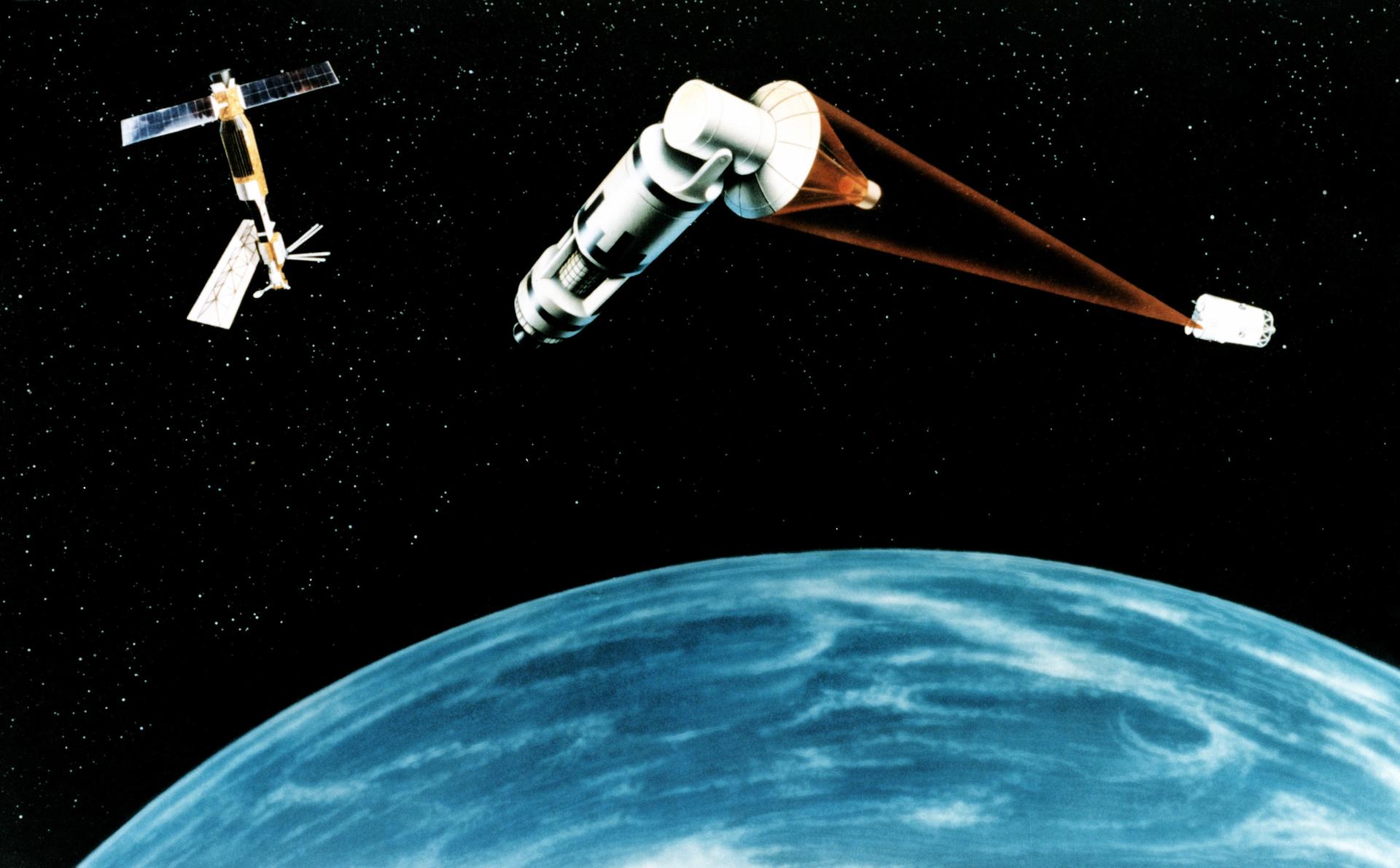The Pentagon’s drive to field a workable missile defense shield has produced a $10 billion flop
An artist's concept of a Space Laser Satellite Defense System.
The Pentagon is known for its lavish spending and massive budget, which exceeds the defense spending of the next eight countries combined.
Since the Reagan Administration, the Department of Defense has attempted to develop a system to intercept long-range missile attacks on the United States. From its inception, the US missile defense program — first nicknamed “Star Wars” — has seen the Pentagon throw millions of taxpayer dollars at the problem without achieving the promised results.
In a new Los Angeles Times investigation into the Pentagon’s Missile Defense Agency, David Willman reveals that post-9/11 missile defense programs have largely failed to deliver on their strategic promises. And the program has wasted $10 billion in taxpayer dollars along the way.
Willman’s investigation focuses in part on a program called Sea-Based X-Band Radar, or SBX, which appears as a giant white dome mounted on a converted offshore drilling platform.
“It stands about 26 stories high and it’s about 400 feet in the water — longer than a football field,” Willman says.
“The original vision for it, as stated by leaders of the Pentagon to members of Congress, was that the SBX radar would be based up in the Aleutian Islands at a specific port," he adds. "In fact, some $27 million was spent just to prepare its special berth up there. [But] it was never ported there for a single day, despite the promises that it would be up and running there as of late 2005. It has never fulfilled its original promise to be part of the everyday missile defense capability of the United States.”
Though SBX does technically work, its inability to read large areas of airspace rapidly render it non-functional for guiding missile interceptors.
"If there was only one missile coming, and if the SBX was somehow fortunate enough to be focused on the spot on the horizon where it was coming from, or if it was cued to that spot, it would have a chance to do the job," says Willman. "[But] because of its narrow field of vision, if you had even a rather crude volley of four, six, or eight missiles spaced by a few minutes apart, it would be highly impractical for SBX to do the job."
Ultimately, SBX was never put into use at its planned homeport in Alaska, and cost taxpayers and the Defense Department $2.2 billion.
Willman’s investigation also reveals that the “Airborne Laser” — a fleet of Boeing 747s with lasers mounted on their noses — cost the agency $5.3 billion. That program was later scrapped because of the laser’s limited range. Additionally, several other costly interceptor programs were also scrapped.
According to Willman, the groundwork for these programs was laid in the 1990s, when a commission headed by Donald Rumsfeld — who was Defense Secretary under President Gerald Ford and would resume the post under President George W. Bush — produced a report that criticized the Clinton Administration’s policy to rigorously test missile defense systems before deployment.
“The Rumsfeld Commission's report came out in 1998 and said that countries such as North Korea, Iran, Iraq — you name it — that they could obtain a long-range missile delivery capability within five years of deciding to do so,” Willman says. "The same Rumsfeld Commission said that various countries — including North Korea, Iran, Iraq — were trying to develop nuclear weapons capability. That provided a lot of impetus. Then the final propulsion mechanism, if you will, was Sept. 11."
He adds: "It was the climate coming out of 9/11 that really helped get this over the goal line.”
There has been, however, dissent among the military establishment about the Pentagon’s missile defense spending.
“Very powerful, well-positioned members of Congress fought doggedly to extend these highly troubled programs even when [Lt. Gen. Patrick J. O’Reilly, a former head of the missile defense agency] and others tried to point out their problems,” Willman says.
“Even then-Secretary of Defense Robert Gates, who had served in the same capacity under President George W. Bush, testified before Congress that the airborne laser was essentially a pipe dream,” he adds.
This story first aired as an interview on The Takeaway, a public radio program that invites you to be part of the American conversation.
